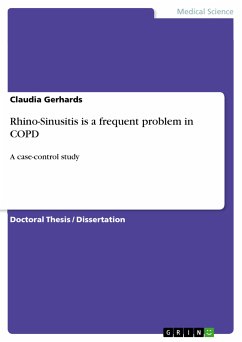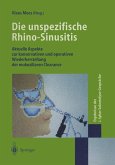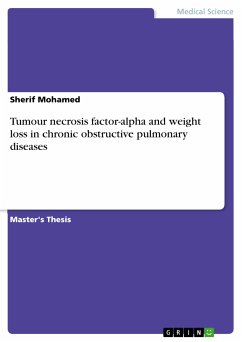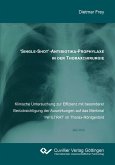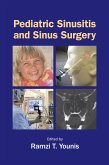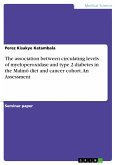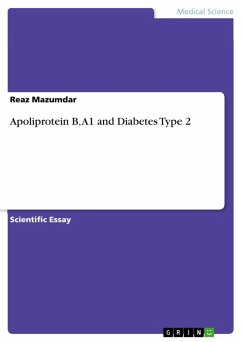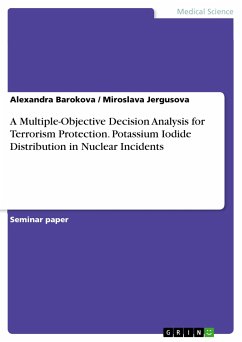Doctoral Thesis / Dissertation from the year 2015 in the subject Medicine - Internal Medicine, grade: passed, University of Basel, course: Pneumologie, language: English, abstract: Background: The prevalence and nature of upper respiratory changes in patients with COPD and its impact on COPD outcomes are unclear. Methods: Patients with stable COPD GOLD stages 1-4 and a control group without COPD matched in gender and age were recruited at the University Hospital Basel. The difference in the Sino-Nasal-Outcome-20 questionnaire (SNOT-20) score was compared between the COPD cohort and the control group. Secondary outcomes were sub-scores SNOT-Primary Nasal Symptoms (SNOT-PNS), SNOT-Secondary Nasal Symptoms (SNOT-SNS) and SNOT-Quality of Life (SNOT-QOL). Abnormal findings were defined as a value of >12 points and absolute values were compared. Furthermore the Rhino-conjunctivitis Quality of Life questionnaire (RQLQ) and three visual analogue scales (VAS) estimating the amount of nasal secretions, bilateral perception of nasal congestion and nasal itching, were applied. As objective clinical surrogate markers for nasal inflammation, computer tomography (CT) scans of the para-nasal sinuses were performed and assessed with the Newman and the Lund-Mackay scoring system. Results: Data from 83 COPD patients (35 females, mean age: 67 years ± 10) and 34 controls (18 females, mean age: 67 years ± 12) were analysed. Forty-eight COPD patients (59%) and 14 controls (41%) had an abnormal SNOT-20 score (p=0.088). An abnormal SNOT-PNS score was found in 49 COPD patients (59%) and in 9 controls (26%) (p<0.01). SNOT-PNS, SNOT-SNS, RQLQ and nasal symptoms (VAS) showed significantly higher values in the COPD group compared to the control group (all p<0.01). Forty-eight COPD patients (59%) and 12 control patients (35%) had an abnormal Lund-Mackay score (p=0.02). The COPD group had a significantly higher median CT Lund-Mackay (p=0.03). Also, forty-eight COPD patients (58%) showed a pathological CT Newman score, whereas 12 controls (35%) had an abnormal CT Newman score (p=0.03). The COPD group had a significantly higher median CT Newman score with 2.0 (ICR 4) than the control group with 0.0 (ICR 1) (p=0.03). Nasal symptom and CT scores did not correlate with each other. Conclusion: Evidence for a higher prevalence of subjective and radiographic signs of rhino-sinusitis in COPD patients compared to controls without COPD was found. Current smoking was highly associated with findings in SNOT-PNS scores (p<0.01) and abnormal CT Newman scores (p=0.046), but did not show significantly more abnormal SNOT-20 scores (p=0.11).
Dieser Download kann aus rechtlichen Gründen nur mit Rechnungsadresse in A, B, BG, CY, CZ, D, DK, EW, E, FIN, F, GR, HR, H, IRL, I, LT, L, LR, M, NL, PL, P, R, S, SLO, SK ausgeliefert werden.

